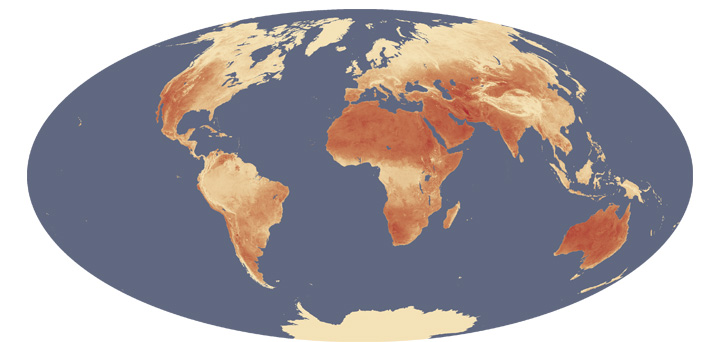NASA Identifies Lut Desert as Hottest Place on Earth Based on Data

In a startling revelation, NASA has identified the Lut Desert, also known as Dasht-e Lut, in southeastern Iran as the hottest place on Earth. The findings, based on surface temperature measurements recorded from 2003 to 2009 using NASA's Aqua satellite, indicate that the maximum temperature in this arid region reached an astounding 70.6 degrees Celsius (159 degrees Fahrenheit). This data has sparked concerns, particularly as many regions worldwide are currently grappling with extreme heat waves.
The Lut Desert spans approximately 2.27 million hectares, with an additional buffer zone covering 1.79 million hectares. It is characterized by its unique geological formations, including massive sand dunes and salt flats. The climate is severely arid, with hot winds prevailing from June to October, further exacerbating the already extreme temperatures. According to Dr. Amir Zare, a meteorologist at the University of Tehran, "The geographical features of the Lut Desert, including its surrounding mountains and deep valley, inhibit air circulation, which contributes to the high temperatures observed in the region."
The unique composition of the desert's sand, which has been darkened by volcanic lava, enhances its capacity to absorb heat, making it one of the most inhospitable environments on the planet. In a comparative study published in the Journal of Geophysical Research in 2021, researchers found that the Lut Desert shares the title of the hottest surface on Earth with the Sonoran Desert in Mexico, emphasizing the extreme climatic conditions present in these locations (Smith et al., 2021).
As global temperatures continue to rise, scientists are increasingly concerned about the implications of such extreme heat. The World Meteorological Organization (WMO) reported in its 2023 climate assessment that the frequency of heatwaves is expected to increase, posing significant risks to human health, agriculture, and the environment. Dr. Elena Grigoryeva, an environmental scientist at the University of California, Berkeley, noted, "Regions like the Lut Desert serve as critical indicators of climate change, and understanding their dynamics is essential for predicting future environmental conditions."
The Lut Desert’s extreme conditions not only pose challenges for human habitation but also affect local ecosystems. Despite the harsh environment, some communities reside in the nearby hills and valleys, relying on limited resources to survive. The ongoing heatwaves in other parts of the world, particularly in India, highlight the broader implications of increasing temperatures. As reported by the Indian Meteorological Department, the country is currently experiencing one of its most severe heatwaves, prompting calls for immediate action to address climate change (Indian Meteorological Department, 2025).
In conclusion, the findings regarding the Lut Desert underscore the urgent need for global awareness and action towards climate change. As scientists continue to study the implications of such extreme temperatures, there is a growing recognition of the interconnectedness of climate systems worldwide. The data from NASA serves as a stark reminder of the challenges that lie ahead and the importance of addressing the root causes of climate change to mitigate its impacts on vulnerable regions globally.
Advertisement
Tags
Advertisement





